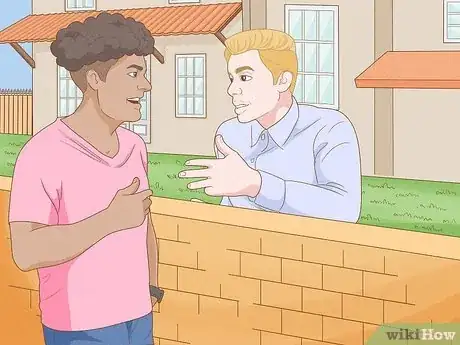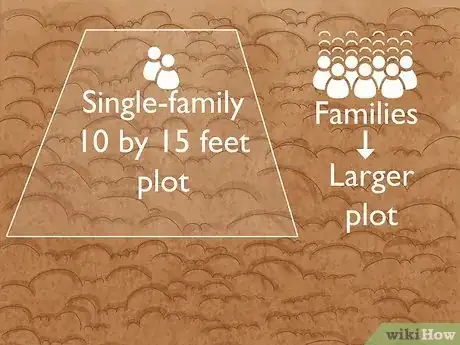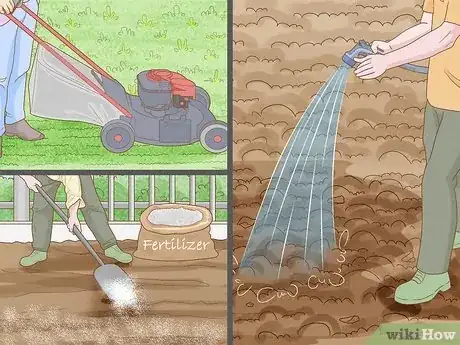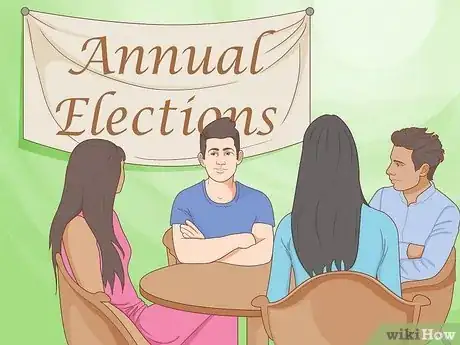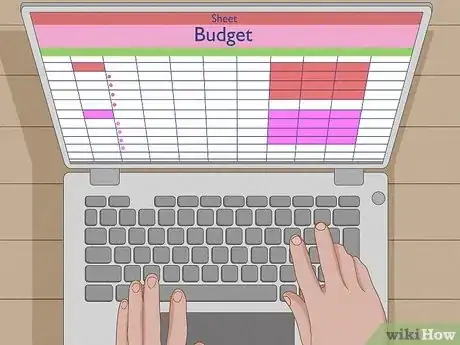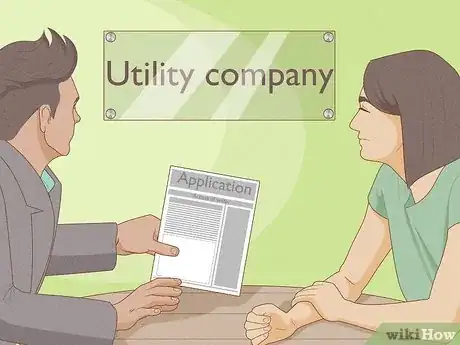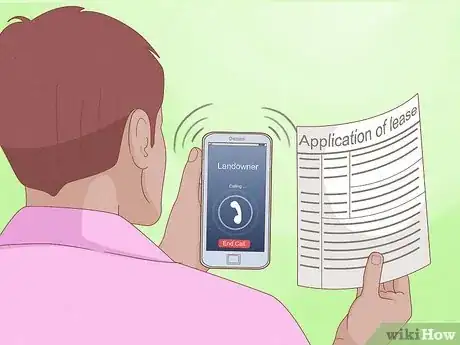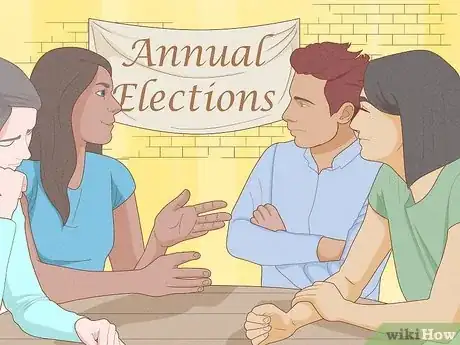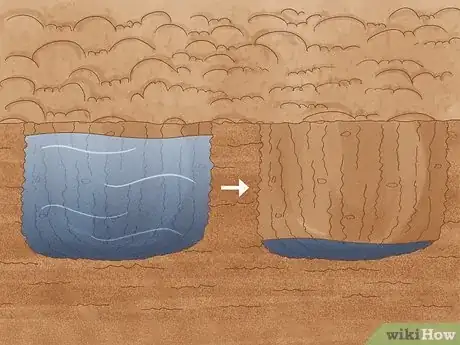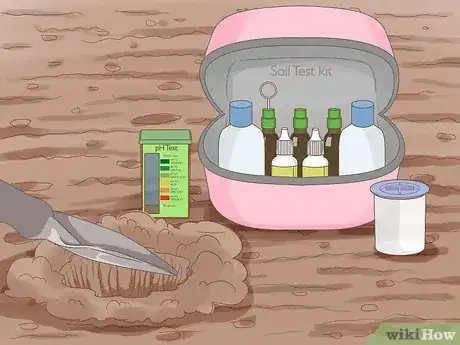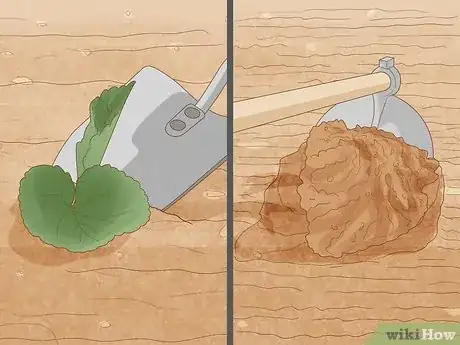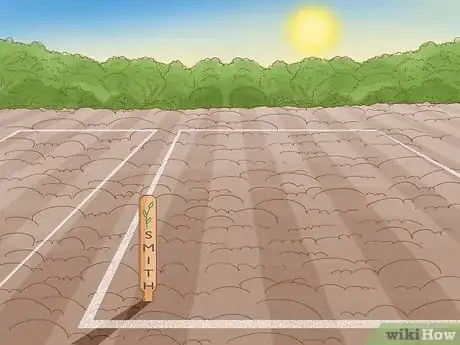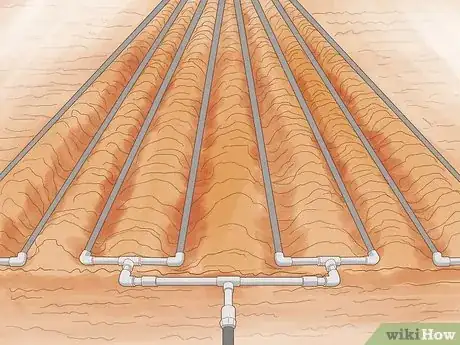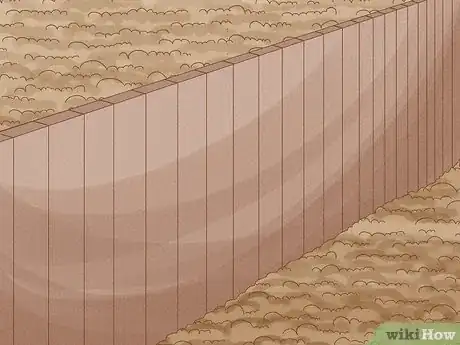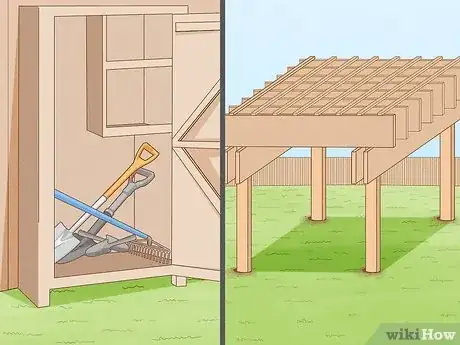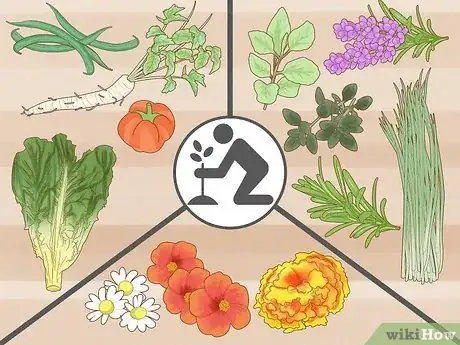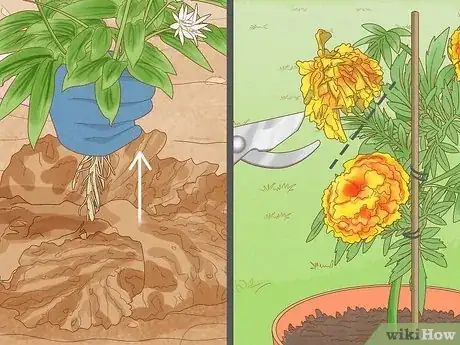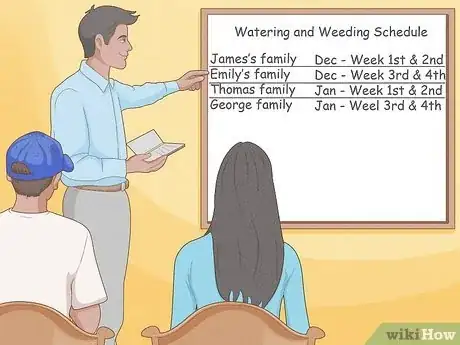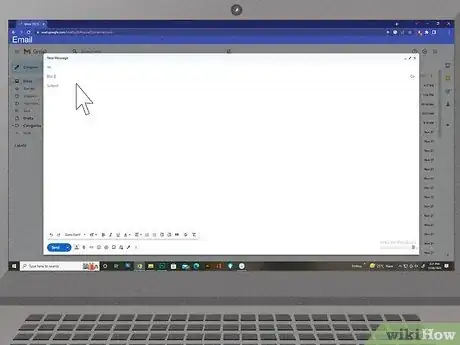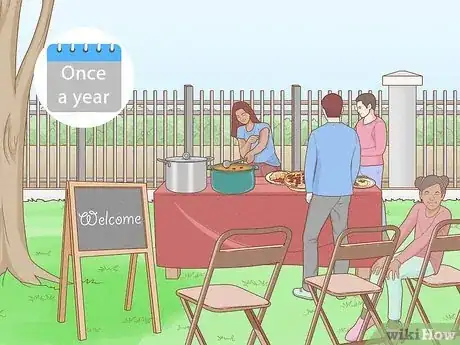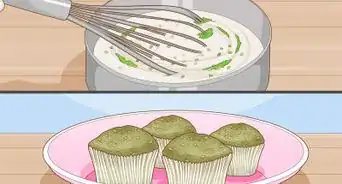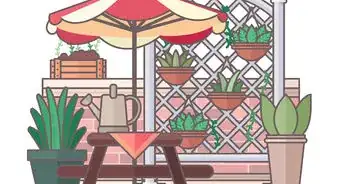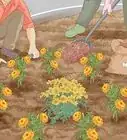This article was co-authored by Ben Barkan. Ben Barkan is a Garden and Landscape Designer and the Owner and Founder of HomeHarvest LLC, an edible landscapes and construction business based in Boston, Massachusetts. Ben has over 12 years of experience working with organic gardening and specializes in designing and building beautiful landscapes with custom construction and creative plant integration. He is a Certified Permaculture Designer, is licensed Construction Supervisor in Massachusetts, and is a Licensed Home Improvement Contractor. He holds an associates degree in Sustainable Agriculture from the University of Massachusetts Amherst.
There are 18 references cited in this article, which can be found at the bottom of the page.
wikiHow marks an article as reader-approved once it receives enough positive feedback. In this case, 84% of readers who voted found the article helpful, earning it our reader-approved status.
This article has been viewed 64,158 times.
If there’s a vacant lot in your neighborhood, you may be thinking that the perfect way to fill it up is with a community garden! Starting a community garden is a great way to bring your neighborhood together while also growing nutritious and great-tasting vegetables, fruits, and herbs. You can also add a children’s plot or flower garden to make your garden even more special. It can be a lot of work to have a community garden, so get a group together to plan and plant it. This same group can keep your garden growing for years to come!
Steps
Organizing Your Gardening Group
-
1Talk to your neighbors to see who’s interested. If you’ve already got a way to connect with everyone in your neighborhood (like an online message board or email list), use this to send out a message. Otherwise, go door to door on a weekday evening when most people will be home. Ask who would be interested in contributing to the garden and make a list.
- When you talk to community members, you can say something like: “Hi! I’m Jenna from down the street. I’m hoping to organize a community garden, and I’d like to know if you’d be interested in working with our neighbors and I on something like that.”
- You may also be able to set up a town hall meeting. Contact a local governmental official or your neighborhood rep to find out if this would be a good option for putting together a garden group.
-
2Gather at least 10-15 households. There’s going to be a lot of work involved in getting this garden up and running! You need a relatively large group to handle the load. If you end up with more families than fifteen, that’s great! However, if your group begins to get too large, you may run into problems with available space. Consider capping the group at about twenty families.[1]
- There’s no set size for a community garden. Generally, single-family plots measure about 10 by 15 feet (3.0 by 4.6 m).[2] If you have twenty families with plots, then, you need a minimum space of 3,000 square feet (278.7 ㎡). Most community gardens are at least 2,000 to 5,000 square feet (185.8-464.5 ㎡).
- If you have access to a smaller spot, that will work great, too! Ultimately, your community garden can be as small or as big as you want.
Advertisement -
3Include only people who are willing to commit to a work schedule. Members of your group will need to regularly water and weed their own plots, and they’ll also need to help take care of any group plots. Be sure your prospective families understand these responsibilities before joining the group.
-
4Nominate a president, treasurer, and other officers. It’s best to assign certain people to take care of the logistics of your garden. This will keep your garden running smoothly and prevent the work from piling up.[3]
- A president can coordinate between different families and speak to members about any problems that come up. For example, the president may occasionally have to talk to the group about strictly following the watering schedule. You might also have a vice-president to split the duties of the president.
- The treasurer can open a bank account in the group’s name and pay water, land-leasing, electricity, and trash disposal bills out of that account.
- The secretary can keep track of all your records and take notes whenever your group (or the officers) meet.
- A social coordinator can organize monthly and/or annual events for your garden club.
-
5Plan for annual elections to replace your officers. Since being an officer could involve a lot work, rotate the duties. Pick a date to hold elections each year. To elect your officers, gather the group together to put names in a hat, or use an online survey tool.[4]
Planning Your Garden
-
1Make a budget and raise funds for the garden if you need to. Your startup costs will vary widely depending on the size of your plot, your location, and what you’d like to include in your garden. However, most typical gardens will cost somewhere between $2,500-$5,000 USD to get started. Start a collection in your neighborhood or host fundraising events to gather this money.[5]
- Keep your fundraising events simple to avoid spending more on them than you make! Organize a car wash, bake sale, or craft fair.
- For some groups, it may be possible to have startup costs close to $0! If you have access to an empty space that an owner allows you to use for free and you’re able to gather gardening tools, seeds, and other supplies from among your neighbors, you won’t have any start-up expenses. Be aware that going forward you’ll likely have low-cost monthly expenses to cover water and electricity bills.
-
2See if you’re eligible for grants. Contact your local government officials to check if there are public funds that could offset your costs. You can also look online to see if any businesses offer grants for planting a community garden. While grant-writing can be time-consuming and complicated, it might pay off to try.
- You might also be able to get donations of gardening tools, seeds, manure, and even cash from local businesses and/or neighborhoods institutions (like schools or churches).
-
3Find suitable land for your garden. Look for empty, well-sized plots of land that receive at least six hours of sunlight. The land should be within about a ten-minute walking distance of a majority of your gardening group members. Write down the addresses of potential spots to find out details about water access and ownership.[6]
-
4Ensure that you have access to water. Contact the utility company that covers the area to find out whether the spots you’ve picked already have water pipes laid down. It’ll be very expensive to put piping down, and you’ll have to make sure that the installation adheres to local zoning laws.[7]
- You should be able to find out if the area already has piping and a water meter by speaking directly to a customer service representative from the water company. Since the potential plots are in your neighborhood, the company should be the same one that provides you with your water.
-
5Contact the landowner to set up a lease. Once you’ve picked a good site, you should be able to find the landowner by contacting your local government and providing them with the address. Write a letter or call the landowner, explaining that you’d like to lease the land for a community garden.[8]
- Make sure to keep the cost of leasing the land low. Remember, if this is a vacant lot, the landowner isn’t benefitting from the land currently. Many garden plots are leased for as little as $1 USD per year.
- To demonstrate the benefits of the lease to the landowner, say that the community garden will help the whole community and could raise land values. The landowner also won’t need to be responsible for maintaining the property or paying any land-related fees to the government.
- Negotiate a lease that’s a minimum of one year, but preferably at least three.
-
6Decide whether to insure the site. To protect yourself and the landowner from potential lawsuits, you might want to insure the garden. You can purchase a liability insurance policy to cover any injuries that occur in the garden. Contact several insurance companies to get advice about the best policy option, along with the best price.[9]
- The monthly fee for the policy can come out of the garden group’s shared bank account.
-
7Establish your garden’s rules and care schedule. Set up a meeting where members of your group can discuss how they’d like the garden to be run. Members can put forward potential rules and vote on each one. Write these down so they can later be posted at the garden site. Now’s also a good time to decide who will care for community plots when.[10]
- Rules could cover the issues of pets being allowed in the garden, littering and vandalism, and/or whether children under 18 will be allowed without adults present.
Planting Your Garden
-
1Test the soil’s drainage. To test drainage, dig a hole in the soil and fill it completely with water. Let it drain and then fill it again. If the hole drains in under 15 minutes, your soil has good drainage. If the hole takes more than an hour (especially if it takes longer than six hours) to drain, you’ve got slow-draining soil.[11]
- You can also assess the drainage of the soil by looking for signs of erosion and low spots where water could pool.[12]
- Most trees, flowers, and vegetables need soil with good drainage.[13]
- If the drainage doesn’t need to be adjusted too much, you may just be able to add some compost and well-rotted manure to improve it. For severe drainage issues, you might need to invest in underground piping to remove the excess water.[14]
-
2Get a pH testing kit to test the soil quality. You can buy a pH testing kit at your local gardening supply store. Get soil samples from multiple spots throughout the garden and then read the strips to discover the pH level of the soil.[15]
- Most plants do best in soil with a pH of between 6.5 and 6.8. However, some (like blueberries) thrive in acidic soil, and the plants prefer a pH as low as 4.5. You’ll need to research which plants to grow in your garden based on your soil’s levels.[16]
- Generally, nutrient-deficient soil can be improved by adding compost and well-rotted manure.[17]
-
3Clear the land of weeds, uneven soil, and debris. If there’s garbage in the lot, remove this first. Then use a rake or hoe to break up the soil and eliminate weeds. Finally, smooth the soil back out and pack it down to prepare it for planting.[18]
- When clearing garbage, wear thick gardening gloves. There could be sharp, potentially rusty and germ-filled materials in your lot, and you don’t want to get tetanus!
-
4Mark the boundaries of your plots. Measure out each of your individual family plots and label them with families’ last names. Determine which plots will be used for any community spaces you plan to include, such as a shared herb or children’s garden.[19]
- You can use paint sticks and permanent marker to create plot labels. If they’d like, families can later create more fun and personalized wooden signs.
-
5Install an irrigation system if it’s in your budget. Since watering will be the major daily task associated with your garden, an automatic irrigation system might be a good investment. However, your site will need to be wired for electricity and have a plug in order for a controller to function. For a more cost-effective option, just install an outdoor water faucet and provide plenty of watering cans.[20]
- Installing a sprinkler system with the controller could cost between about $1,800-$3,300 USD. Larger gardens and high-quality systems will both cause prices to fall on the higher end of this range.[21]
- It shouldn’t cost more than about $300-$450 USD for a plumber to set up an outdoor water faucet.[22]
-
6Add a fence and sign to minimize vandalism. Depending on your budget, either hire professionals or install the fence yourself. Then choose a name for your garden. Place a sign on the fence with the garden’s name and some contact information that members of the public can use to ask questions or voice concerns about the garden.[23]
- The fence might not completely eliminate vandalism, but you shouldn’t install barbed wire or even a security system. Remember that the garden is part of the community, and you want it to feel open and friendly for all of your neighbors.
-
7Build a shed and make a sitting area. A storage shed that’s placed in the corner of your garden will be useful for protecting your gardening tools from weather and vandals. You’ll also want a shady area with places to sit and possibly a picnic table for eating and other group activities. If there’s no shade, make or buy a pergola.[24]
- You can use hay bales as seats.
-
8Plant the vegetables, flowers, and herbs of your choice. It’s finally time to get planting! Generally, a community garden will have lots of individual family vegetable plots and shared herb and flower gardens. However, if you’d like, you can always plant your own herbs and flowers! Have families start individual plots on their own, and pick a day when the group can tackle the community plots together.[25]
- Some good vegetables to start with include tomatoes, lettuce, sugar snap peas or green beans, summer squash, and radishes.[26]
- A good herb garden should include basil, chives, lavender, parsley, thyme, and rosemary.[27]
- Calendula (or pot marigold), marigold, chamomile and daisies, nasturtium, phacelia, and clover are all great companion flowers for vegetables. They’ll attract good bugs (especially bees) and keep away some of the bad ones![28]
Maintaining Your Garden
-
1Allow individuals to care for their own plots. Group members should visit the garden frequently to water their plots. During the harvest seasons of your various vegetable plants, they’ll also need to regularly collect vegetables. They should also remove weeds and deadhead the plants.[29]
- Group members will need to decide how often they’d like to visit their plots. During hot weather, they’ll likely need to stop by each day or at least every other day. In the off-season, they can probably visit just once every week or so.
- If individual families aren’t taking care of their plots, ask if they’d like a different family to take it over.
-
2Establish a watering and weeding schedule for shared plots. Rotate the care of community plots among your members, assigning these spaces to one family for one to two weeks at a time. Start the schedule over once you’ve gone through the entire group.[30]
- You may also want to make one person (such as the president) responsible for visiting the garden at least once per week to check on these shared areas.
-
3Use composting, recycling, and trash bins to manage waste. Set up a group meeting to make sure everyone knows how to compost and recycle. Be very clear about what materials should and shouldn’t be composted, as you’ll be using the compost to regularly enrich your soil.[31]
- You shouldn’t compost diseased plants, meat or milk products, or animal waste.[32] These could all prevent your compost from producing the good bacteria that you want in there.
- Use caution when composting weeds. Check to make sure they haven’t developed seeds that could corrupt your compost pile (such as when a yellow dandelion becomes a white puffball).[33] If you do end up with seeded weeds in your compost, ensure that the pile heats up enough to break them down by turning the compost at least once per week.[34]
-
4Use an email list to keep in touch with the group. Major email services, including Gmail, will allow you to easily set up a mailing list. The president or another garden group member should send out a message at least once a month. Include community updates, growing guides for the season, event announcements, and any other communications you need to share.[35]
- Regular communication will keep the group connected. After all, that’s what a community garden is all about!
-
5Share community meals in the garden once a year. During the harvest season, use the vegetables and herbs you’ve grown to make a delicious meal. You can also invite people from the neighborhood who don’t belong to the garden group. This is a great way to demonstrate the value and purpose of your garden.[36]
-
6Invite guest speakers to talk about gardening and the environment. Get in touch with a local gardening store or community college. See if there are gardeners, horticulturalists, landscapers, or environmental scientists who’d be willing to talk to your garden group. This could be a fun way for your group to hang out while also increasing your gardening expertise![37]
- Potential topics could include sustainable gardening, pest and weed control, or garden management.
- You could also contact a local chef to see if they’d be willing to trade some locally grown vegetables for a cooking lesson!
Community Q&A
-
QuestionWill the land be free?
 DonaganTop AnswererIn most cases, the land is donated by the owner (which may be a city or town).
DonaganTop AnswererIn most cases, the land is donated by the owner (which may be a city or town). -
QuestionIf there is no water source, how do we get water to a community garden?
 Community AnswerYou'll need to contact the water company that provides water in that area. Ask them how much it would cost to connect piping and add a meter to your community garden. You may also need to contact your local government to see if there's a reason there's not already a water source in the plot. If possible, try to find another plot! Adding a water source can get pricey and complicated.
Community AnswerYou'll need to contact the water company that provides water in that area. Ask them how much it would cost to connect piping and add a meter to your community garden. You may also need to contact your local government to see if there's a reason there's not already a water source in the plot. If possible, try to find another plot! Adding a water source can get pricey and complicated. -
QuestionWhat do you do if nobody wants to help with the garden?
 Nicholas NewmanCommunity AnswerI would suggest keeping the garden to a size which you can comfortably manage and monitor. Until others help, don't create a garden that requires more than you could manage.
Nicholas NewmanCommunity AnswerI would suggest keeping the garden to a size which you can comfortably manage and monitor. Until others help, don't create a garden that requires more than you could manage.
References
- ↑ https://www.treehugger.com/lawn-garden/ever-wondered-how-start-community-garden.html
- ↑ http://www.fcgov.com/gardens/our-gardens/community-gardens
- ↑ http://celosangeles.ucdavis.edu/files/97080.pdf
- ↑ http://celosangeles.ucdavis.edu/files/97080.pdf
- ↑ http://celosangeles.ucdavis.edu/files/97080.pdf
- ↑ http://celosangeles.ucdavis.edu/files/97080.pdf
- ↑ http://celosangeles.ucdavis.edu/files/97080.pdf
- ↑ http://celosangeles.ucdavis.edu/files/97080.pdf
- ↑ https://communitygarden.org/resources/10-steps-to-starting-a-community-garden/
- ↑ http://celosangeles.ucdavis.edu/files/97080.pdf
- ↑ https://www.treepeople.org/sites/default/files/pdf/resources/How-to%20Test%20Soil%20Drainage.pdf
- ↑ Ben Barkan. Garden & Landscape Designer. Expert Interview. 14 April 2020.
- ↑ https://www.growveg.com/guides/understanding-soil-types-for-vegetable-gardens/
- ↑ http://www.bhg.com/gardening/landscaping-projects/landscape-basics/improve-poor-drainage/
- ↑ https://www.growveg.com/guides/understanding-soil-types-for-vegetable-gardens/
- ↑ https://www.growveg.com/guides/understanding-soil-types-for-vegetable-gardens/
- ↑ http://www.sunset.com/garden/garden-basics/improving-soil-structure
- ↑ http://aggie-horticulture.tamu.edu/kindergarden/CHILD/COM/COMMUN.HTM
- ↑ http://aggie-horticulture.tamu.edu/kindergarden/CHILD/COM/COMMUN.HTM
- ↑ http://celosangeles.ucdavis.edu/files/97080.pdf
- ↑ http://www.homeadvisor.com/cost/lawn-and-garden/install-a-sprinkler-system/
- ↑ https://www.angieslist.com/articles/how-much-does-it-cost-install-outdoor-water-faucet.htm
- ↑ http://celosangeles.ucdavis.edu/files/97080.pdf
- ↑ http://celosangeles.ucdavis.edu/files/97080.pdf
- ↑ http://celosangeles.ucdavis.edu/files/97080.pdf
- ↑ http://www.sunset.com/garden/fruits-veggies/easy-edible-plants#easy-edible-plants_8
- ↑ http://www.naturallivingideas.com/top-12-must-herbs-grow-kitchen-garden/
- ↑ https://www.growveg.com/guides/flowers-for-vegetable-gardens/
- ↑ https://www.treehugger.com/lawn-garden/ever-wondered-how-start-community-garden.html
- ↑ https://www.treehugger.com/lawn-garden/ever-wondered-how-start-community-garden.html
- ↑ http://celosangeles.ucdavis.edu/files/97080.pdf
- ↑ http://www.organicauthority.com/sanctuary/11-items-you-shouldnt-compost.html
- ↑ http://www.vegetablegardener.com/item/10338/should-weeds-be-added-to-the-compost-pile
- ↑ http://aggie-horticulture.tamu.edu/vegetable/files/2010/10/E-326.-Easy-Gardening-Composting-to-Kill-Weed-Seeds.pdf
- ↑ https://communitygarden.org/resources/10-steps-to-starting-a-community-garden/
- ↑ https://www.treehugger.com/lawn-garden/ever-wondered-how-start-community-garden.html
- ↑ https://www.treehugger.com/lawn-garden/ever-wondered-how-start-community-garden.html
